Panasonic of North America AP8S71 MICROWAVE OVEN User Manual
Panasonic Appliance Company of America MICROWAVE OVEN
USERS MANUAL
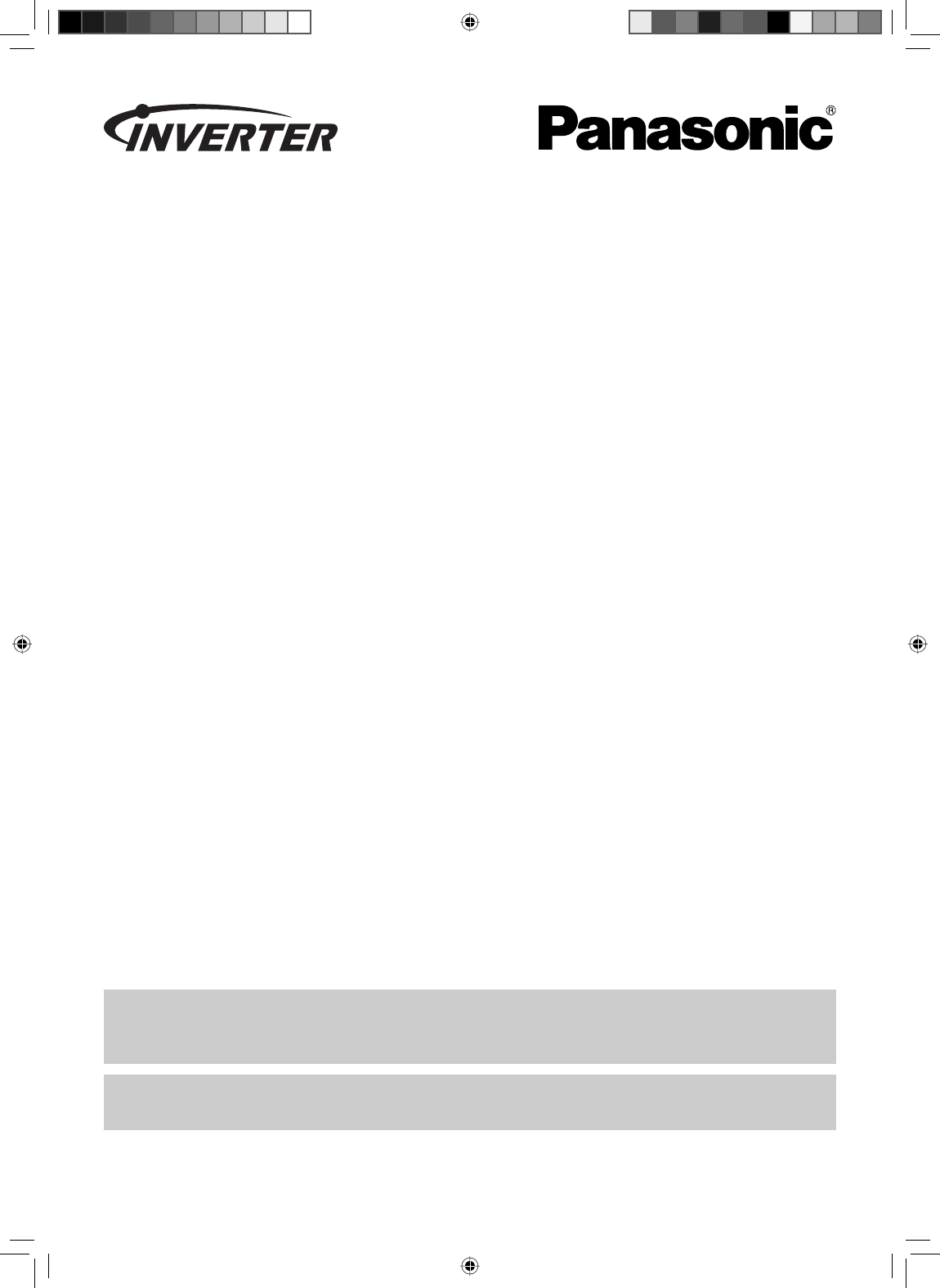
Operating Instructions
Steam Convection Microwave Oven
Model: NN-CS597S
READ ALL INSTRUCTIONS CAREFULLY BEFORE USING THE OVEN.
Para instrucciones en español, voltee el libro.
For assistance, please call: 1-800-211-PANA(7262)
or send e-mail to: consumerproducts@panasonic.com
or visit us at www.panasonic.com (U.S.A)
For assistance, please call: 787-750-4300
or visit us at www.panasonicpr.com (Puerto Rico)
F00038S70AP
iPress0707-0
Printed in China
IP1156_38S70AP_Eng_12_070705.indd 1IP1156_38S70AP_Eng_12_070705.indd 1 2007-7-5 10:54:262007-7-5 10:54:26

Safety Information
Precaution .............................................................................................................................................1
Important Safety Instructions ..............................................................................................................2-4
Installation and Grounding Instructions ..............................................................................................5-6
Safety Precautions .......................................................................................................................... 7-10
Cookware and Container Guide .....................................................................................................11-12
Cookware and Container Chart ...........................................................................................................13
Specifications ......................................................................................................................................14
Table of Contents
IP1156_38S70AP_Eng_12_070705.indd 2IP1156_38S70AP_Eng_12_070705.indd 2 2007-7-5 10:54:262007-7-5 10:54:26
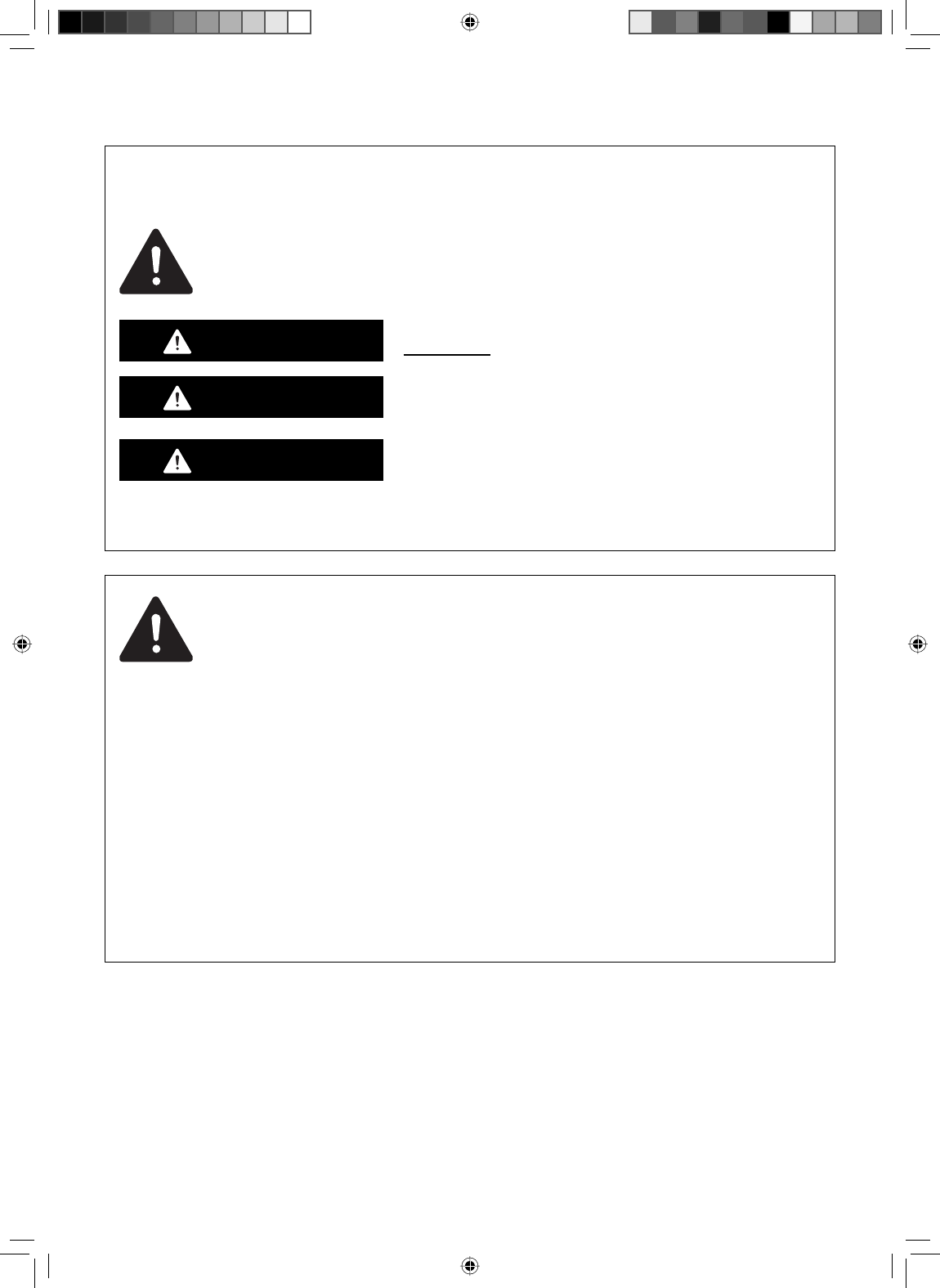
1
Microwave Oven Safety
Your safety and the safety of others are very important.
We have provided important safety messages in this manual and on your appliance. Always read
and obey all safety messages.
This is the safety alert symbol. It is used to alert you to potential hazards that can kill
or hurt you and others.
The safety messages will follow the safety alert symbol and either the word
“DANGER”, “WARNING” or “CAUTION”. These words mean:
You can be killed or seriously injured if you don’t
immediately follow instructions.
You can be killed or seriously injured if you don’t follow
instructions.
You can be exposed to a potentially hazardous situation
which, if not avoided, may result in minor or moderate
injury.
The safety messages will tell you what the potential hazard is, tell you how to reduce the chance
of injury, and tell you what can happen if the instructions are not followed.
PRECAUTIONS TO AVOID
POSSIBLE EXPOSURE TO
EXCESSIVE MICROWAVE ENERGY
(a) Do not attempt to operate this oven with the door open since open-door operation can result
in harmful exposure to microwave energy. It is important not to defeat or tamper with the
safety interlocks.
(b) Do not place any object between the oven front face and the door or allow soil or cleaner
residue to accumulate on sealing surfaces.
(c) Do not operate the oven if it is damaged. It is particularly important that the oven door close
properly and that there is no damage to the:
(1) door (bent),
(2) hinges and latches (broken or loosened),
(3) door seals and sealing surfaces.
(d) The oven should not be adjusted or repaired by anyone except properly qualified service
personnel.
© Copyrighted by Matsushita Electric Industrial Co., Ltd. 2007.
DANGER
WARNING
CAUTION
IP1156_38S70AP_Eng_12_070705.indd Sec2:1IP1156_38S70AP_Eng_12_070705.indd Sec2:1 2007-7-5 10:54:262007-7-5 10:54:26
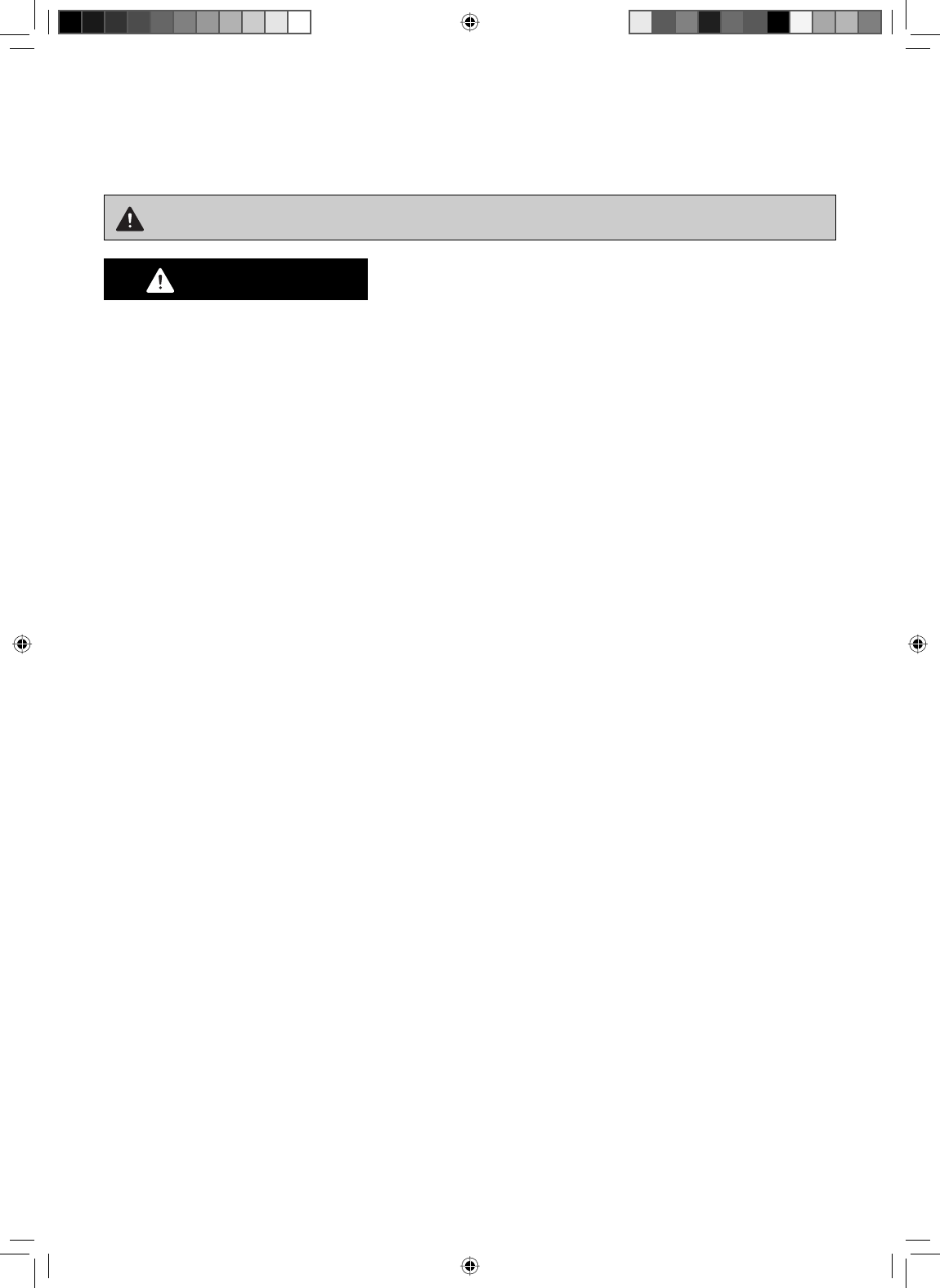
2
Thank you for purchasing a Panasonic Microwave Oven.
Your microwave oven is a cooking appliance and you should use as much care as you use with a
stove or any other cooking appliance. When using this electrical appliance, basic safety precautions
should be followed, including the following:
WARNING — To reduce the risk of burns, electric shock, fire, injury to
persons, or exposure to excessive microwave energy:
1. Read all instructions before using this appliance.
2. Read and follow the specific “PRECAUTIONS TO AVOID POSSIBLE EXPOSURE TO
EXCESSIVE MICROWAVE ENERGY,” found on page 1.
3. This appliance must be grounded. Connect only to a properly grounded outlet. See
“GROUNDING INSTRUCTIONS” found on page 5 and 6.
4. As with any cooking appliance, DO NOT leave oven unattended while in use.
5. Install or locate this appliance only in accordance with the installation instructions found on page 5.
6. DO NOT cover or block any openings on this appliance.
7. DO NOT store this appliance outdoors. DO NOT use this product near water— for example, near
a kitchen sink, in a wet basement, or near a swimming pool or similar locations.
8. Use this appliance only for its intended use as described in this manual. DO NOT use corrosive
chemicals, vapors, or non-food products in this appliance. This type of oven is specifically
designed to heat, or cook food. It is not designed for industrial or laboratory use. The use of
corrosive chemicals in heating or cleaning will damage the appliance and may result in radiation
leaks.
9. When cleaning surfaces of the door and oven that come together on closing the door, use only
mild, non-abrasive soaps or detergents applied with a sponge or soft cloth.
10. DO NOT allow children to use this appliance, unless closely supervised by an adult. DO NOT
assume that because a child has mastered one cooking skill he/she can cook everything.
11. DO NOT operate this appliance if it has a damaged cord or plug, if it is not working properly, or if
it has been damaged or dropped.
12. DO NOT immerse cord or plug in water.
13. Keep cord away from heated surfaces.
14. DO NOT let cord hang over edge of a table or counter.
15. This appliance should be serviced only by qualified service personnel. Contact the nearest
authorized service center for examination, repair or adjustment.
16. Some products such as whole eggs with or without shell, narrow neck bottles and sealed
containers — for example, closed glass jars — may explode and should not be heated in this
oven.
17. To reduce the risk of fire in the oven cavity:
(a) DO NOT overcook food. Carefully attend appliance when paper, plastic, or other combustible
materials are placed inside the oven to facilitate cooking.
(b) Remove wire twist-ties from paper or plastic bags before placing bag in oven.
(c) If material inside the oven ignites, keep oven door closed, turn oven off, and
disconnect the power cord, or shut off power at the fuse or circuit breaker panel.
(d) DO NOT use the cavity for storage purposes. DO NOT leave paper products, cooking
utensils or food in the cavity when not in use.
18. Superheated Liquids
Liquids, such as water, coffee, or tea are able to be overheated beyond the boiling point
without showing evidence (or signs) of boiling. Visible bubbling is not always present when the
container is removed from the microwave oven. THIS COULD RESULT IN VERY HOT LIQUIDS
SUDDENLY BOILING OVER WHEN THE CONTAINER IS DISTURBED OR A UTENSIL IS
INSERTED INTO THE LIQUID.
IMPORTANT SAFETY INSTRUCTIONS
IP1156_38S70AP_Eng_12_070705.indd Sec1:2IP1156_38S70AP_Eng_12_070705.indd Sec1:2 2007-7-5 10:54:272007-7-5 10:54:27
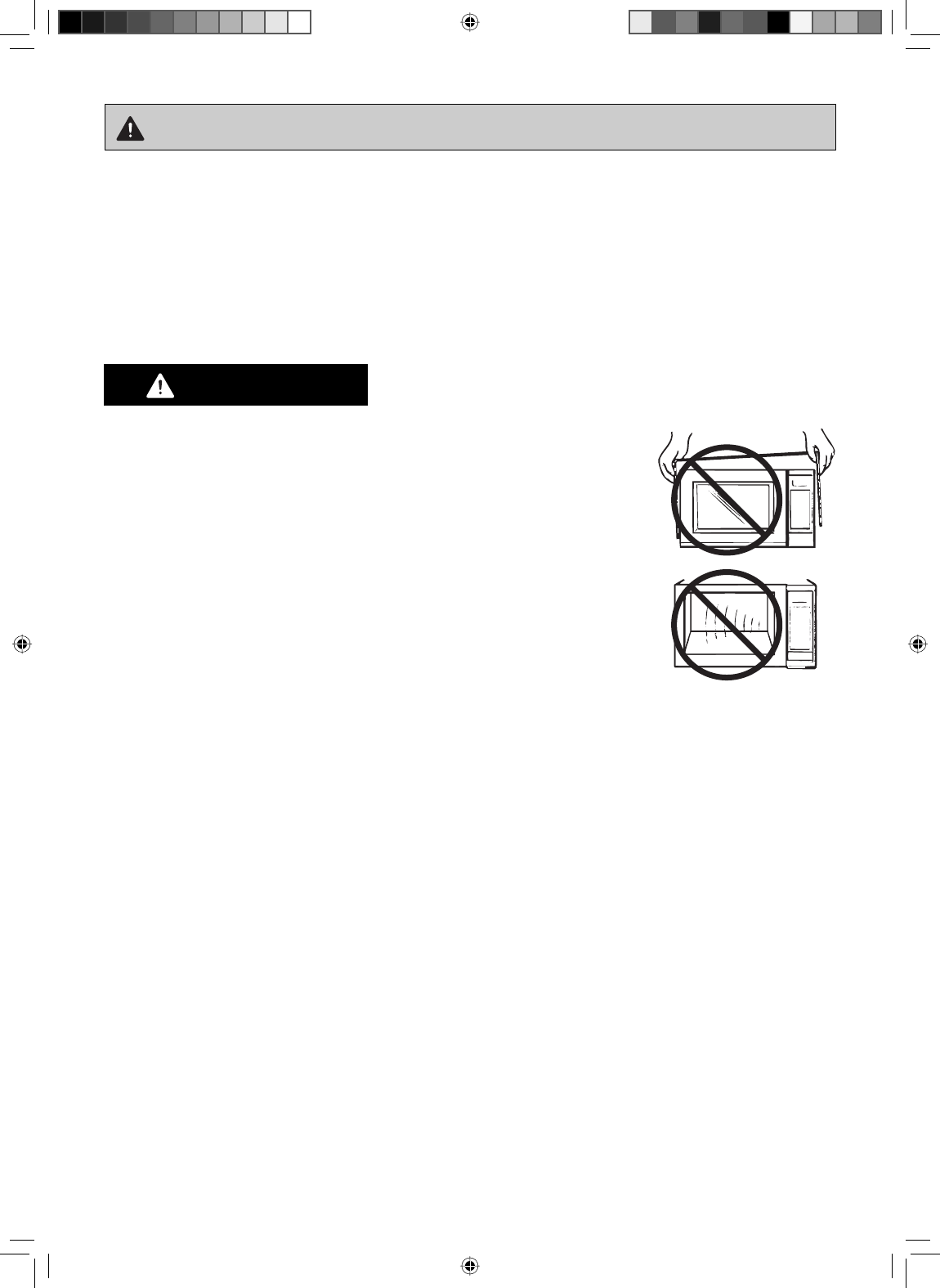
3
TO AVOID THE RISK OF SHOCK:
DO NOT remove outer panel from oven. Repairs must be done only by a
qualified service person.
TO REDUCE THE RISK OF EXPOSURE TO MICROWAVE ENERGY:
DO NOT tamper with, or make any adjustments or repairs to Door,
Control Panel Frame, Safety Interlock Switches, or any other part of oven,
microwave leakage may result.
TO AVOID THE RISK OF FIRE:
1. DO NOT operate the oven empty. The microwave energy will reflect
continuously throughout the oven causing overheating and damage, if
food or water is not present to absorb energy.
2. DO NOT store flammable materials next to, on top of, or in the oven.
3. DO NOT dry clothes, newspapers or other materials in the oven, or use
newspaper or paper bags for cooking.
4. DO NOT hit or strike Control Panel. Damage to controls may occur.
5. DO NOT use recycled paper products unless the paper product is labeled as safe for microwave
oven use.
Recycled paper products may contain impurities which may cause sparking.
TO AVOID THE RISK OF SCALDING:
POT HOLDERS should always be used when removing items from the oven. Heat is transferred from
the HOT food to the cooking container and from the container to the Glass Tray. The Glass Tray can
also be very HOT after removing the cooking container from the oven.
SAVE THESE INSTRUCTIONS
For proper use of your oven, read remaining safety cautions and operating instructions.
IMPORTANT SAFETY INSTRUCTIONS
(continued)
To reduce the risk of injury to persons:
(a) STIR THE LIQUID BOTH BEFORE AND HALFWAY THROUGH HEATING IT.
(b) DO NOT heat water and oil, or fats together. The film of oil will trap steam, and may
cause a violent eruption.
(c) DO NOT use straight-sided containers with narrow necks.
(d) After heating, allow the container to stand in the microwave oven for a short time before
removing the container.
19. DO NOT cook directly on the glass tray. It can crack, cause injury or damage to the oven.
WARNING
IP1156_38S70AP_Eng_12_070705.indd Sec1:3IP1156_38S70AP_Eng_12_070705.indd Sec1:3 2007-7-5 10:54:272007-7-5 10:54:27
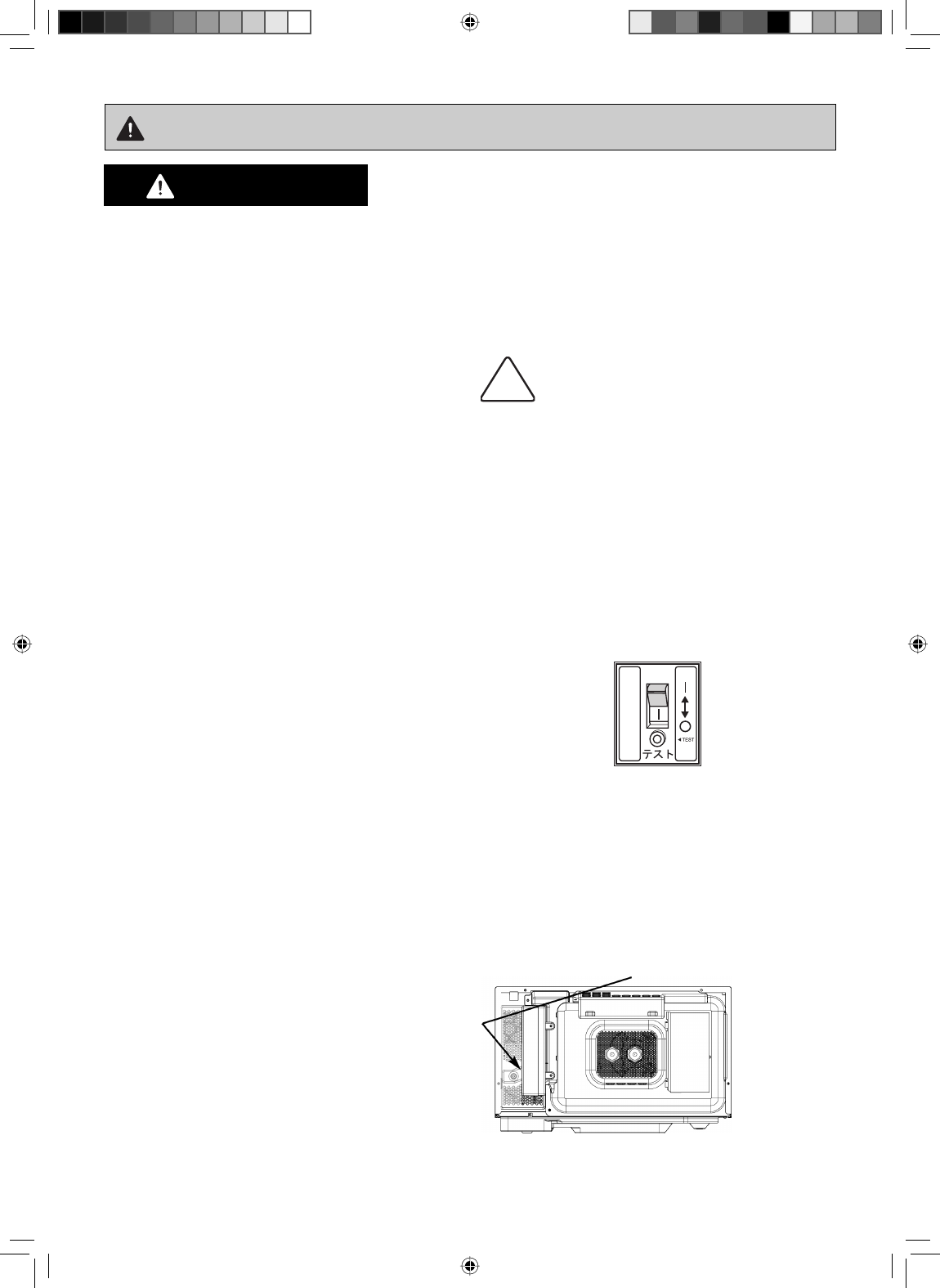
4
7. Only allow children to use the oven without
supervision when adequate instructions
have been given so that the child is able to
use the oven in a safe way and understands
the hazards of improper use, including
escaping steam. To prevent burns, ensure
that children do not touch either the hot
inner sufaces or the hot outer casing after
operation of the oven.
WARNING: This appliance
produces boiling hot steam.
8. Liquids and foods must not be heated in
sealed containers since they are liable to
explode.
Operating the circuit breaker
If the oven is not operating correctly, please
check the position of the breaker switch. If the
switch is at the ‘O’ position, please position it to
the ‘I’ position. If the switch does not return to the
‘I’ position, please contact your dealer.
Testing the circuit breaker
To ensure that the breaker is in working order,
please test it regularly by pressing the ‘TEST’
key. Testing it once a month is recommended.
Press the ‘TEST’ key when the oven is switched
on. If the switch does not go back to ‘O’, please
contact your dealer.
WARNING
1. The door seals and door seal areas
should be cleaned with a damp cloth. The
appliance should be inspected for damage
to the door seals and door seal areas and
if these areas are damaged the appliance
should not be operated until it has been
repaired by a service technician trained by
the manufacturer.
2. Do not attempt to tamper with or make any
adjustments or repairs to the door, control
panel housing, safety interlock switches or
any other part of the oven. Do not remove
the outer panel from the oven which gives
protection against exposure to microwave
energy.
Repairs should only be done by a qualified
service technician.
3. Do not operate this appliance if it has a
damaged CORD OR PLUG, if it is not
working properly, or if it has been damaged
or dropped. It is dangerous for anyone other
than a service technician trained by the
manufacturer to perform repair service.
4. If the supply cord of this appliance is
damaged, it must be replaced with
the special cord available from the
manufacturer.
5. Do not use the water tank if it is cracked
or broken, as leaking water could result
in electrical failure and danger of electric
shock. If the water tank becomes damaged,
please contact your dealer.
6. This appliance is not intended for use by
persons (including children) with reduced
physical, sensory or mental capabilities, or
lack of experience and knowledge unless
they have been given supervision or
instruction concerning use of the appliance
by a person responsible for their safety.
Young children should be supervised
to ensure that they do not play with the
appliance.
!
IMPORTANT SAFETY INSTRUCTIONS
(continued)
IP1156_38S70AP_Eng_12_070705.indd Sec1:4IP1156_38S70AP_Eng_12_070705.indd Sec1:4 2007-7-5 10:54:272007-7-5 10:54:27
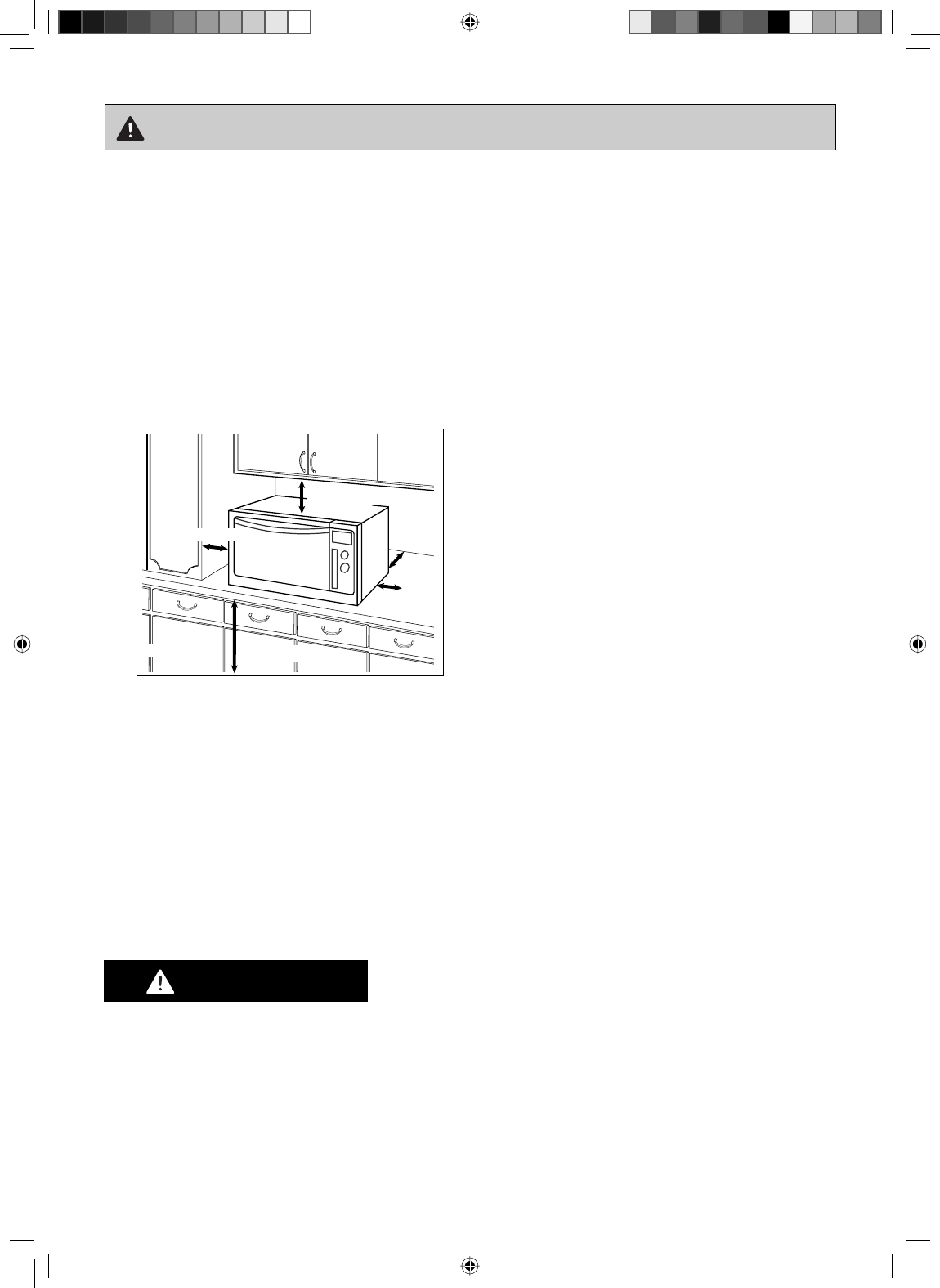
5
Examine Your Oven
Unpack oven, remove all packing material and examine the oven for any damage such as dents,
broken door latches or cracks in the door. Notify dealer immediately if oven is damaged. DO NOT
install if oven is damaged.
Placement of Oven
1. The oven must be placed on a flat, stable surface, which is 36" (91.5 cm) height from the ground.
Place the front surface of the door three inches or more from the counter top edge to avoid
accidental tipping of the microwave oven during normal use. For correct operation, the oven
must have sufficient air flow. Allow 6" (15 cm) of space on the top of the oven, 4" (10 cm)
at the back, 2" (5 cm) on the left and the other side being open. If one side of the oven is
placed flush to wall, the other side or top must not be blocked. Do not remove feet.
6" (15 cm)
4"
(10 cm)
OPEN
2" (5 cm)
Counter-top 36" (91.5 cm)
a) DO NOT block air vents. If they are blocked during operation, the oven may overheat and be
damaged. Also allow sufficient space on back and both sides of the oven.
b) DO NOT place oven near a hot or damp surface such as a gas stove, electric range or sink
etc.
c) DO NOT operate oven when room humidity is too high.
2. This oven was manufactured for household use only. It is not approved or tested for mobile
vehicle, marine, or commercial use.
Installation
DO NOT block air vents. If they are blocked during operation, the oven may overheat. If the oven
overheats, a thermal safety device will turn the oven off. The oven will remain inoperable until it has
been serviced and the safety switch is reset.
— IMPROPER USE OF THE GROUNDING PLUG CAN
RESULT IN A RISK OF ELECTRIC SHOCK.
Consult a qualified electrician or service person if the grounding instructions are not completely
understood, or if doubt exists as to whether the appliance is properly grounded.
INSTALLATION AND GROUNDING INSTRUCTIONS
WARNING
36" (91.5 cm)
IP1156_38S70AP_Eng_12_070705.indd Sec1:5IP1156_38S70AP_Eng_12_070705.indd Sec1:5 2007-7-5 10:54:282007-7-5 10:54:28

6
Grounding Instructions
THIS APPLIANCE MUST BE GROUNDED. In the event of an electrical short circuit, grounding
reduces the risk of
electric shock by providing an escape wire for the electric current. This appliance is equipped with a
cord having a
grounding wire with a grounding plug. The plug must be plugged into an outlet that is properly
installed and grounded.
• Plug into properly installed and grounded 3 prong outlet.
• DO NOT remove ground prong.
• DO NOT use an adapter.
Power Supply
1. A short power-supply cord is provided to reduce the risks resulting from becoming entangled in
or tripping over a longer cord.
2. Longer cord sets or extension cords are available and may be used if care is exercised in their
use. DO NOT let cord hang over edge of a table or counter.
3. If a long cord or extension cord is used, (1) the marked electrical rating of the cord set or
extension cord should be at least as great as the electrical rating of the appliance, (2) the
extension cord must be a grounding-type 3-wire cord, and (3) the longer
cord should be arranged so that it will not drape over the counter top or
tabletop where it can be pulled on by children or tripped over accidentally.
Wiring Requirements
1. The oven must be operated on a SEPARATE CIRCUIT. No other appliance should share the
circuit with the microwave oven. If it does, the branch circuit fuse may blow or the circuit breaker
may trip.
2. The oven must be plugged into at least a 20 AMP, 120 VOLT, 60 Hz GROUNDED OUTLET.
Where a standard two-prong outlet is encountered, it is the personal responsibility and obligation
of the consumer to have it replaced with a properly grounded three-prong outlet.
3. The VOLTAGE used must be the same as specified on this microwave oven (120 V, 60 Hz).
Using a higher voltage is dangerous and may result in a fire or oven damage. Using a lower
voltage will cause slow cooking. Panasonic is NOT responsible for any damages resulting from
the use of the oven with any voltage other than specified.
TV / Radio Interference
1. Operation of the microwave oven may cause interference to your radio, TV or similar equipment.
2. When there is interference, it may be reduced or eliminated by taking the following measures:
(a) Place the radio, TV, etc. away from the microwave oven as far as possible.
(b) Use a properly installed antenna to obtain stronger signal reception.
(c) Clean door and sealing surfaces of the oven. (See Care and Cleaning of Your Microwave
Oven)
Fan Motor Operation
After using the oven repeatedly or for long time, the fan may operate to cool the electric components.
This is perfectly normal, and you can take out the food from the oven while the fan operates.
INSTALLATION AND GROUNDING INSTRUCTIONS
(continued)
IP1156_38S70AP_Eng_12_070705.indd Sec1:6IP1156_38S70AP_Eng_12_070705.indd Sec1:6 2007-7-5 10:54:282007-7-5 10:54:28
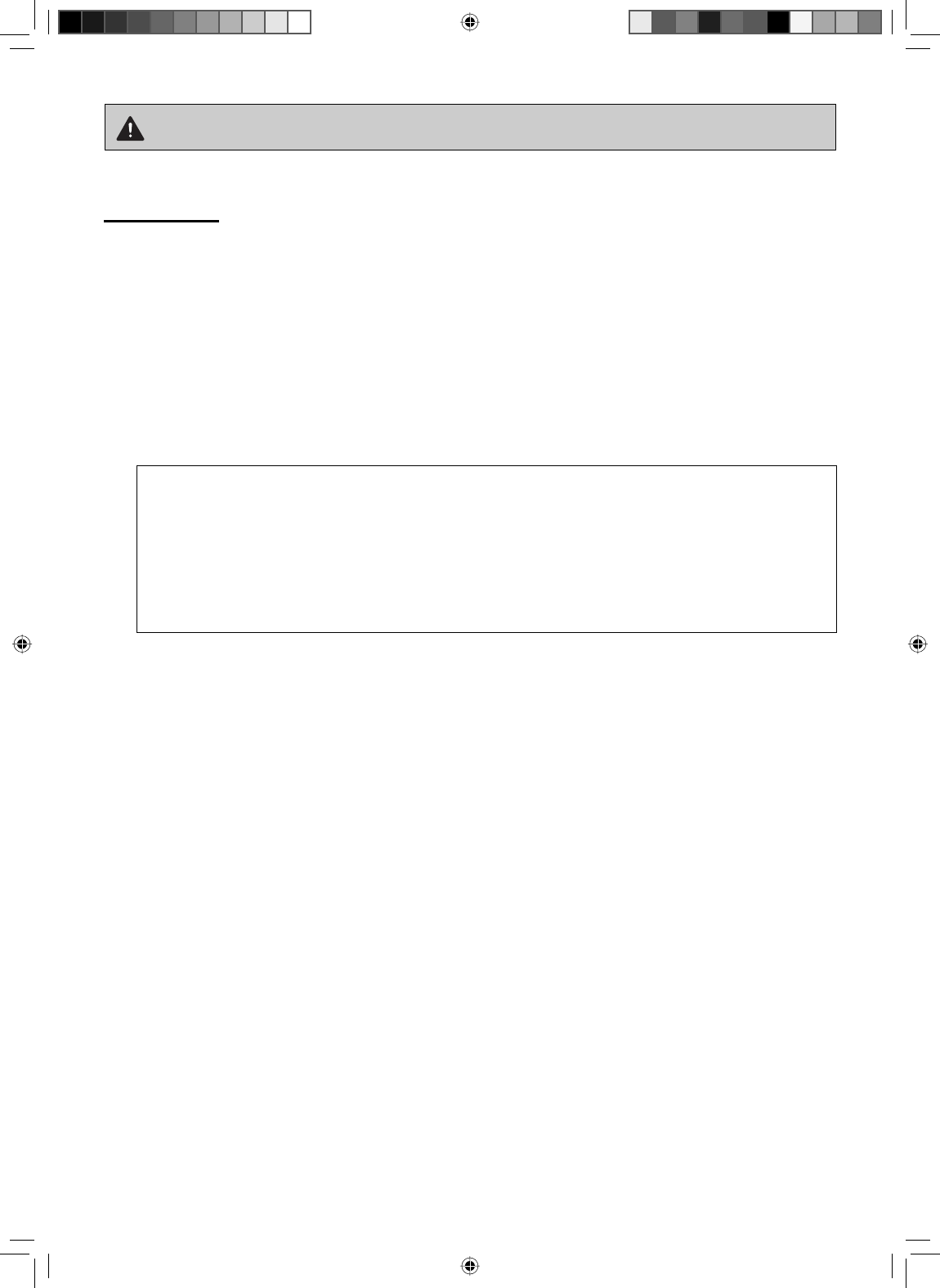
7
Follow These Safety Precautions When Cooking in Your Oven.
IMPORTANT
Proper cooking depends upon the power, the time setting and quantity of food. If you use a
smaller portion than recommended but cook at the time for the recommended portion, fire
could result.
1)
HOME CANNING / STERILIZING / DRYING FOODS / SMALL QUANTITIES OF FOODS
• DO NOT use your oven for home canning. Your oven cannot maintain the food at the proper
canning temperature. The food may be contaminated and then spoil.
• DO NOT use the microwave oven to sterilize objects (baby bottles, etc.). It is difficult to keep
the oven at the high temperature needed for sterilization.
• DO NOT dry meats, herbs, fruits or vegetables in your oven. Small quantities of food or foods
with low moisture content can dry out, scorch or catch on fire if overheated.
2) POPCORN
Popcorn may be popped in a microwave oven corn popper. Microwave popcorn which pops in
its own package is also available. Follow popcorn manufacturers’ directions and use a brand
suitable for the cooking power of your microwave oven.
CAUTION: When using pre-packaged microwave popcorn, you can follow recommended
package instructions or use the popcorn program in Auto Menu. Otherwise, the popcorn may
not pop adequately or may ignite and cause a fire. Never leave oven unattended when popping
popcorn. Allow the popcorn bag to cool before opening, always open the bag facing away from
your face and body to prevent steam burns.
3) DEEP FAT FRYING
• DO NOT deep fat fry in your microwave oven. Cooking oils may burst into flames and may
cause damage to the oven and perhaps result in burns. Microwave utensils may not withstand
the temperature of the hot oil, and can shatter or melt.
4) FOODS WITH NONPOROUS SKINS
• DO NOT COOK/REHEAT WHOLE EGGS, WITH OR WITHOUT THE SHELL. Steam buildup
in whole eggs may cause them to explode, and possibly damage the oven or cause injury.
Reheating SLICED hard-boiled eggs and cooking SCRAMBLED eggs is safe.
• Potatoes, apples, whole squash and sausages are examples of foods with nonporous
skins. These types of foods must be pierced before microwave cooking to prevent them from
exploding.
CAUTION: Cooking dry or old potatoes can cause fire.
5) GLASS TRAY / COOKING CONTAINERS / FOIL
• Cooking containers get hot during microwaving. Heat is transferred from the HOT food to the
container and the Glass Tray. Use pot holders when removing containers from the oven or
when removing lids or plastic wrap covers from cooking containers, to avoid burns.
• The Glass Tray will get hot during cooking. It should be allowed to cool before handling or
before paper products, such as paper plates or microwave popcorn bags, are placed in the
oven for microwave cooking.
• When using foil in the oven, allow at least 1-inch (2.5 cm) of space between foil and interior
oven walls or door.
• Dishes with metallic trim should not be used, as arcing may occur.
Safety Precautions
IP1156_38S70AP_Eng_12_070705.indd Sec1:7IP1156_38S70AP_Eng_12_070705.indd Sec1:7 2007-7-5 10:54:282007-7-5 10:54:28
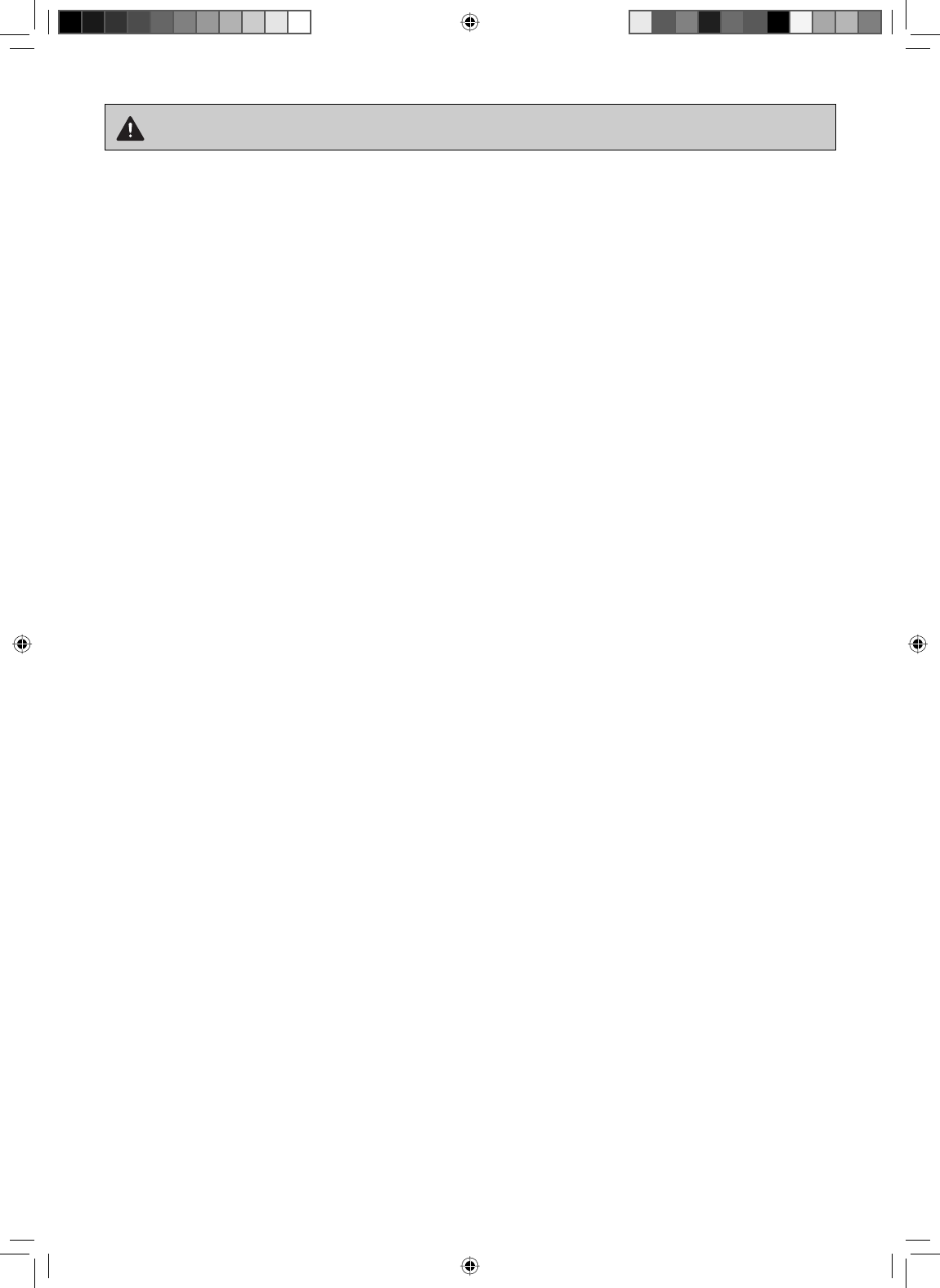
8
Safety Precautions (continued)
6) PAPER TOWELS / CLOTHS
• DO NOT use paper towels or cloths which contain a synthetic fiber woven into them. The
synthetic fiber may cause the towel to ignite. Use paper toweling under supervision.
7) BROWNING DISHES / OVEN COOKING BAGS
• Browning dishes or grills are designed for microwave cooking only. Always follow instructions
provided by the manufacturer. DO NOT preheat browning dish more than 6 minutes.
• If an oven cooking bag is used for microwave cooking, prepare according to package
directions. DO NOT use a wire twist-tie to close bag, instead use plastic ties, cotton string or a
strip cut from the open end of the bag.
8) THERMOMETERS
• DO NOT use a conventional meat thermometer in your oven. Arcing may occur. Microwave
safe thermometers are available for both meat and candy.
9) BABY FORMULA / BABY FOOD
• DO NOT heat baby formula or baby food in the microwave oven. The glass jar or surface of
the food may appear warm while the interior can be so hot as to burn the infant’s mouth and
esophagus.
10) REHEATING PASTRY PRODUCTS
• When reheating pastry products, check temperatures of any fillings before eating. Some foods
have fillings which heat faster and can be extremely hot, while the surface remains warm to the
touch (ex. Jelly Donuts).
11) GENERAL OVEN USAGE GUIDELINES
• DO NOT use the oven for any reason other than the preparation of food. This oven is
specifically designed to heat or cook food. DO NOT use this oven to heat chemicals or other
non-food products.
• Before use, check that utensils/containers are suitable for use in microwave ovens.
• DO NOT attempt to use this microwave oven to dry newspaper, clothing or any other materials.
They may catch fire.
• When the oven is not being used, DO NOT store any objects other than oven accessories
inside the oven in case it is accidentally turned on.
• The appliance shall not be operated by MICROWAVE or COMBINATION WITHOUT FOOD IN
THE OVEN.
Operation in this manner may damage the appliance. Exception to this is point 1 under heater
operation or pre-heating on CONVECTION with enamel or wire shelf.
• If smoke or a fire occurs in the oven, press Stop/Cancel pad and leave the door closed in order
to stifle any flames. Disconnect the power cord, or shut off power at the fuse or the circuit
breaker panel.
• During and after cooking with steam function, do not open the oven door when your face is
very close to the oven. Care must be taken when opening the door as steam may cause injury.
CAUTION!: Steam may billow out when you open the door. If there is steam in the oven,
do not reach in with your bare hands! Risk of burns! Use oven gloves.
IP1156_38S70AP_Eng_12_070705.indd Sec1:8IP1156_38S70AP_Eng_12_070705.indd Sec1:8 2007-7-5 10:54:282007-7-5 10:54:28
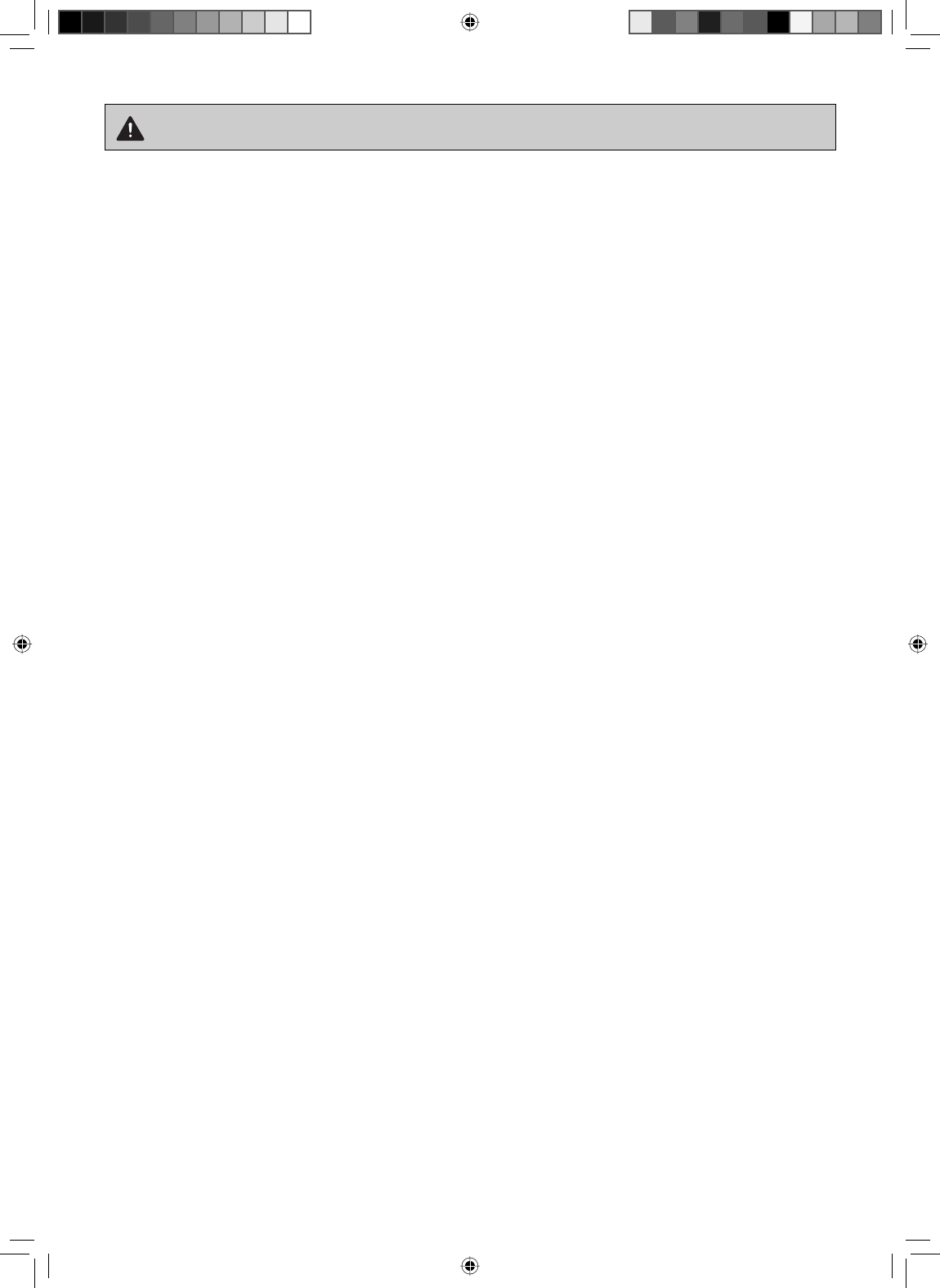
9
Safety Precautions (continued)
12) Heater Operation
• Before using CONVECTION, COMBINATION or GRILL function for the first time, wipe
excessive oil off in the oven cavity and operate the oven without food and accessories on
CONVECTION 250°C, for 10 minutes. This will allow the oil that is used for rust protection to
be burned off.
This is the only time the oven is used empty.
• Exterior oven surfaces, including air vents on the cabinet and the oven door will get hot
during CONVECTION, GRILL or COMBINATION involving CONVECTION, GRILL or STEAM
functions. To prevent burns, take care when opening or closing the door and when inserting or
removing food and accessories.
• The oven has heaters situated in the top and rear of the oven. During and after using either
the CONVECTION, GRILL or COMBINATION involving CONVECTION, GRILL or STEAM
functions, all inside surfaces of the oven will be very hot. To prevent burns, care should be
taken to avoid touching the inside surfaces of the oven or hot water inside the steam trough.
NB. After cooking by these modes, the oven accessories will be very hot.
• The accessible parts may become hot when the oven is operated in CONVECTION, GRILL or
COMBINATION modes. Children should only use the oven under adult supervision due to the
temperatures generated.
IP1156_38S70AP_Eng_12_070705.indd Sec1:9IP1156_38S70AP_Eng_12_070705.indd Sec1:9 2007-7-5 10:54:292007-7-5 10:54:29

10
Enamel Shelf
1. The Enamel Shelf is for cooking on
CONVECTION mode only. Do not use on
MICROWAVE, GRILL or COMBINATION
modes.
2. For 2 level CONVECTION cooking, the
Enamel Shelf can be used as the lower level
and the wire shelf can be used as the upper
level.
Drip Tray
1. Before using the oven, place the drip tray in
position. Holding with both hands, click into
position on the oven legs. To remove the
drip tray refer to page 14.
2. The purpose of the drip tray is to collect
excess water during STEAM and
MICROWAVE mode. It should be emptied
after each STEAM and MICROWAVE
operation.
Ceramic Cover
1. Before using the oven, place the ceramic
cover over the evaporating channel.
Fan Motor Operation
While the oven is in Microwave/Heater
operation, the cooling fan always rotates to cool
the electric components.
After the completion of operation, the fan may
continue rotating for a while. This is perfectly
normal, and you can take out the food from the
oven while the fan is still in operation.
Oven Light
When it becomes necessary to replace the oven
light, please consult your dealer.
Accessories
The oven comes equipped with a variety of
accessories. Always follow the directions given
for use of the accessories.
Glass Tray
1. Use only the Glass Tray specifically
designed for this oven. DO NOT substitute
any other glass tray.
2. If the Glass Tray is hot, allow to cool before
cleaning or placing in water.
3. DO NOT cook directly on the Glass Tray.
Always place food in a microwave safe dish,
or on a rack set in a microwave safe dish.
High and Low Wire Rack
1. The Wire Racks can be used for GRILLING
foods. It can be used for CONVECTION or
COMBINATION cooking.
2. DO NOT use any metal container directly
on the Wire Racks in COMBINATION with
MICROWAVE. (Refer to paragraph about
anti-spark ring).
3. DO NOT use the Wire Racks in
MICROWAVE mode only.
Safety Precautions (continued)
IP1156_38S70AP_Eng_12_070705.indd Sec1:10IP1156_38S70AP_Eng_12_070705.indd Sec1:10 2007-7-5 10:54:292007-7-5 10:54:29

11
Glass, Ceramic and China
Heat-Resistant glass cookware is invaluable
in microwave cooking. Many of these items are
readily available in most homes: glass jugs,
mixing bowls, loaf dishes, covered casseroles,
oblong baking dishes, pie plates and round or
square cake dishes. Examples of this type of
cookware are Pyrex® and Corningware®.
Dinnerware can be used for microwave heating.
Many brands of dinnerware are microwave
safe. Check the care information for reference
to microwave use for dinnerware and serving
pieces. If dinnerware is marked ovenproof, it
frequently is safe to use in the microwave oven.
However, to be sure, check by conducting
microwave dish test.
Several types of glassware and dinnerware
are not recommended for use in the microwave
oven. Do not use dishes with metallic trim or
containers with metal parts. Do not use cups or
mugs with glued on handles, as they may fall
off with continued heating. Do not use delicate
glassware. Although the glassware may be
transparent to microwave energy the heat from
the food may cause the glassware to crack.
Jars and Bottles
Jars and bottles can be used to warm food to
serving temperature, if the lid is removed first.
Cooking should not be done in these containers
since most are not heat resistant and during
extended heating times, heat from food would
cause cracking or breaking.
Cookware and Container Guide
It is important to use the correct container when
cooking in a microwave oven. The following will
help you make the right selection.
How to Test a Container for Safe
Microwave Oven Use
TO TEST A CONTAINER FOR SAFE
MICROWAVE OVEN USE: Fill a 1-cup glass
measure with cool water and place it in the
microwave oven alongside the empty container
to be tested; heat one (1) minute at High
Power. If the container is microwave ovensafe
(transparent to microwave energy), the empty
container should remain comfortably cool,
the water in glass measure should be hot. If
the container is hot, it has absorbed some
microwave energy and should NOT be used.
This test cannot be used for plastic containers.
Paper Products and Freezer Wrap
Waxed paper, paper plates, cups and napkins
should not be used for heating or cooking
food. Freezer wrap should not be used as it is
not heat resistant and may melt. Paper towel,
greaseproof paper and bake paper may be
safely used for short periods of time for covering
or lining.
Straw, Wicker and Wood
Straw and wicker baskets may be used in the
microwave oven for short periods of time to
warm rolls or bread. Large wooden utensils,
such as bowls or cutting boards should NOT be
used for prolonged heating as the microwave
energy may cause the wood to become dry and
brittle.
IP1156_38S70AP_Eng_12_070705.indd Sec1:11IP1156_38S70AP_Eng_12_070705.indd Sec1:11 2007-7-5 10:54:292007-7-5 10:54:29
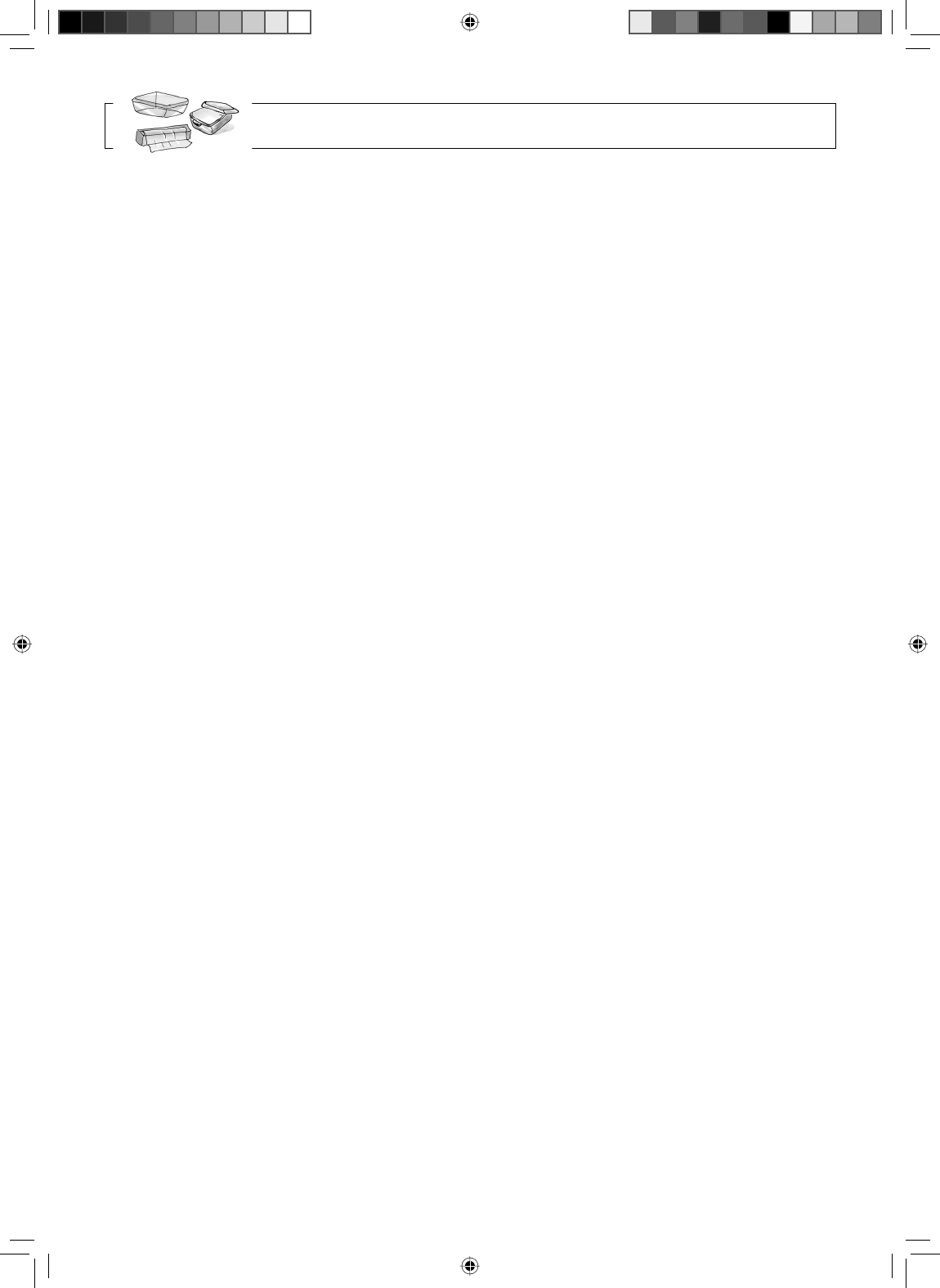
12
Cookware and Container Guide
(continued)
Plastics
Plastic dishes, cups and some freezer
containers should be used with care in a
microwave oven. Choose plastic containers
carefully, as some plastic containers may
become soft, melt and may scorch. The majority
of plastic dishes, even those designed for use in
the microwave oven, are not suitable for cooking
foods with high fat or sugar content, or for
lengthy cooking times. Most microwave plastic
dishes should not be used for longer than 3 to 5
minutes on High power. These dishes, although
not suitable for extended cooking, may be used
successfully for defrosting or for use on lower
power levels.
Cooking Bags designed to withstand boiling,
freezing, or conventional heating are microwave
safe. Prepare bags according to manufacturer’s
directions. When cooking by microwave, DO
NOT use wire twist-ties to close bag. They can
act as an antenna and cause arcing (sparks).
DO NOT COOK IN PLASTIC FOOD STORAGE
BAGS.
Plastic Wrap such as GLAD WRAP® can be
used to cover dishes in most recipes. Over an
extended heating time, some disfiguration of the
wrap may occur. When removing plastic wrap
“covers”, as well as any glass lid, be careful to
remove it away from you to avoid steam burns.
Loosen plastic but let dish stand, covered.
Metal
Metal cookware or utensils, or those with
metallic trim, should NOT be used in the
microwave. Since microwave energy is reflected
by metal, foods in metal containers will not cook
evenly. There is also a possibility of “arcing.”
Although metal utensils should be avoided in
microwave cooking, some metal can be helpful
when used correctly.
Aluminum foil can be used safely, if certain
guidelines are followed, to prevent overcooking.
Small pieces of foil are used to shield areas
such as chicken wings, tips of roasts, or other
thin parts that cook before the rest of the recipe
is finished. Make sure foil is attached securely
and doesn’t touch sides of oven, otherwise
arcing may occur. Foil lined containers, either
cardboard or plastic, should NOT be used in the
microwave oven as arcing could occur.
Metal twist-ties, either paper or plastic coated,
should NOT be used in the microwave oven.
Frozen dinner trays can be used in the
microwave, if the container is no deeper than
2 cm and is filled with food. Metal skewers can
not be used in microwave ovens as arcing may
occur. Wooden skewers are readily available
and can be used.
Dishes: Scalloped baking dishes are best used
during reheating and for short periods of cooking
time only.
Thermometers are available for
use in microwave ovens. DO NOT
USE CONVENTIONAL MERCURY
TYPE CONFECTIONARY OR MEAT
THERMOMETERS in food while cooking in the
microwave oven.
IP1156_38S70AP_Eng_12_070705.indd Sec1:12IP1156_38S70AP_Eng_12_070705.indd Sec1:12 2007-7-5 10:54:292007-7-5 10:54:29

13
Cookware and Container Chart
Microwave Grill Convection Combination Steam/Micro
Aluminium foil for shielding yes yes for shielding for shielding
Brown paper bags no no no no no
Dinnerware
oven/microwave safe
non-oven, microwave
safe
yes
yes
yes
no
yes
no
yes
no
yes
no
Disposable
paperboard containers yes* no yes* (up to
220ºC)
yes* (up to
220ºC)
no
Glassware
oven glassware &
ceramic
non heat resistant
yes
no
yes
no
yes
no
yes
no
yes
no
Metal cookware no yes yes no no
Metal twist-ties no yes yes no no
Oven cooking bag yes no yes* yes yes
Paper towels and
napkins
yes no no no no
Plastic defrosting rack yes no no no yes
Plastic dishes
microwave safe
non microwave safe
yes
no
no
no
no
no
no
no
yes
no
Plastic wrap yes no no no not required
Straw, wicker, wood yes no no no yes
Thermometers
microwave safe
conventional
yes
no
no
yes
no
yes
no
no
yes
no
Waxed paper yes no no no not required
Silicon bakeware yes no yes* yes* yes
* Check manufacturers' recommendation, must withstand heat.
IP1156_38S70AP_Eng_12_070705.indd Sec1:13IP1156_38S70AP_Eng_12_070705.indd Sec1:13 2007-7-5 10:54:302007-7-5 10:54:30
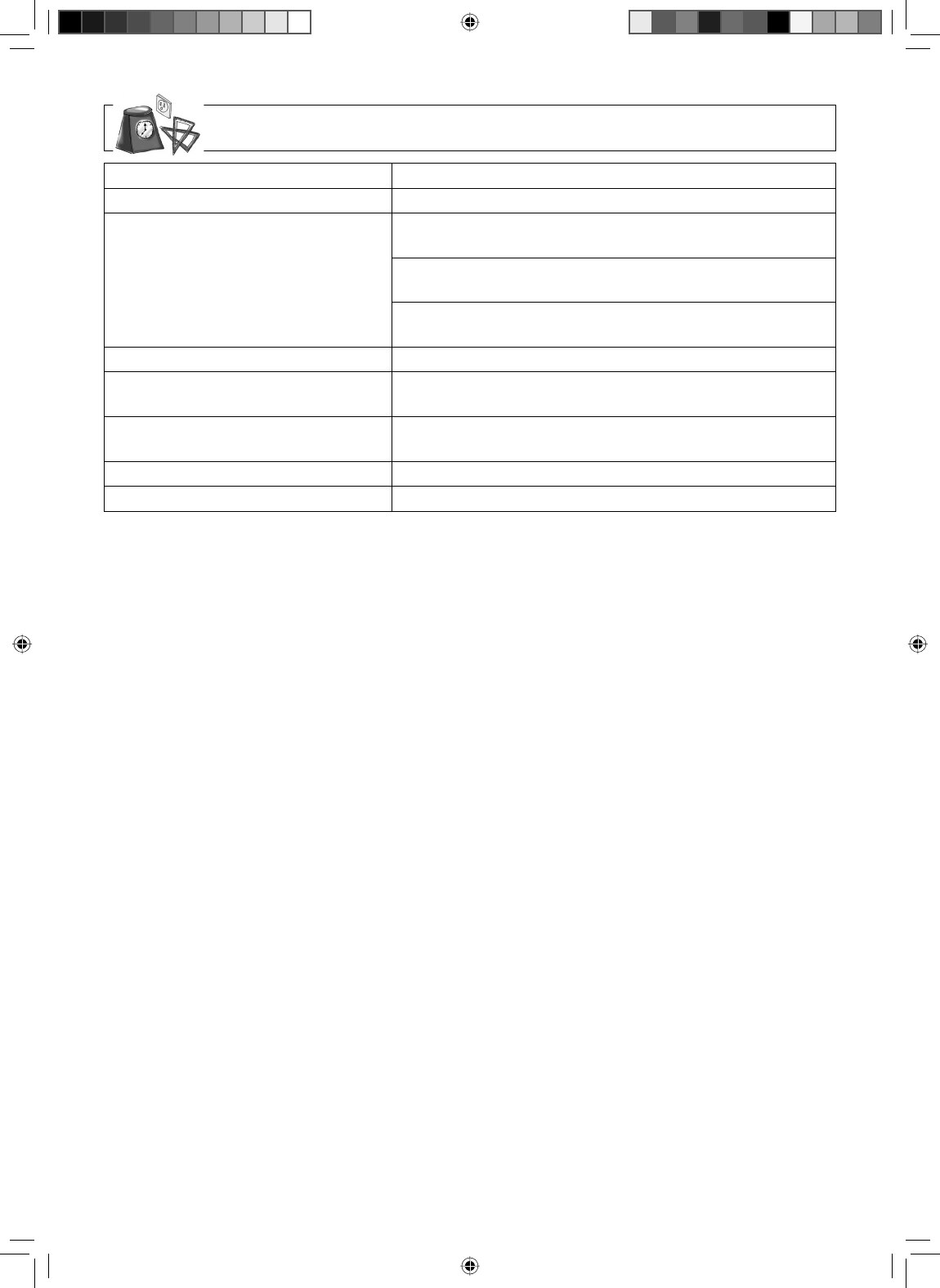
14
Specifications
NN-CS597S
Power Source: 120 V, 60 Hz
Power Consumption: Microwave:
12.0 Amps, 1,460 W
Bake:
10.9 Amps, 1,300 W
Steam+Microwave:
11.9 Amps, 1,380 W
Cooking Power:* 1,000 W
Outside Dimensions (W x D x H): 20 19/32" x 19 9/16" x 12 19/32"
(523 mm x 497 mm x 320 mm)
Oven Cavity Dimensions (W x D x H): 13 15/16" x 13 1/2" x 8 1/16"
(354 mm x 343 mm x 205 mm)
Operating Frequency: 2,450 MHz
Net Weight: Approx. 42 lbs. (19 kg)
* IEC Test procedure
Specifications subject to change without notice.
IP1156_38S70AP_Eng_12_070705.indd Sec1:14IP1156_38S70AP_Eng_12_070705.indd Sec1:14 2007-7-5 10:54:302007-7-5 10:54:30